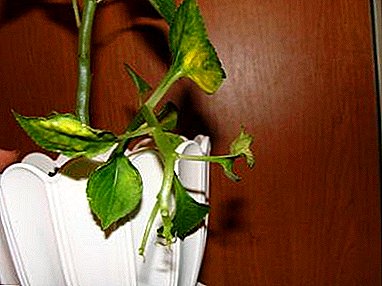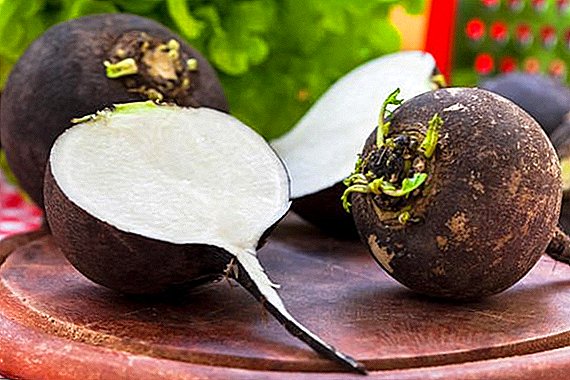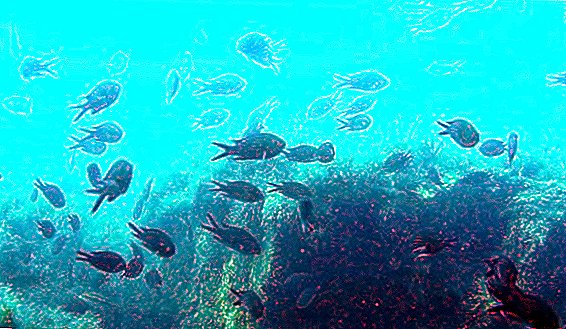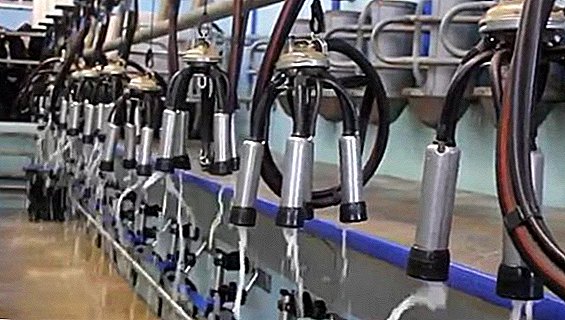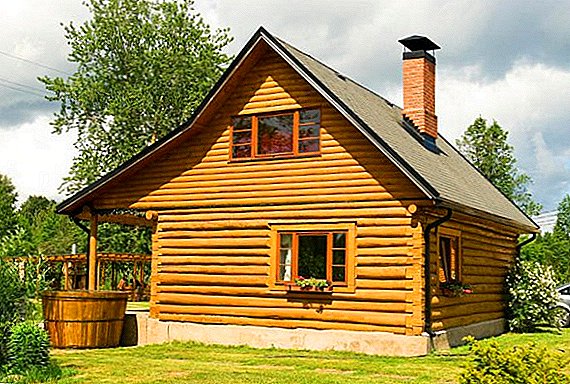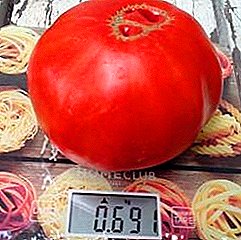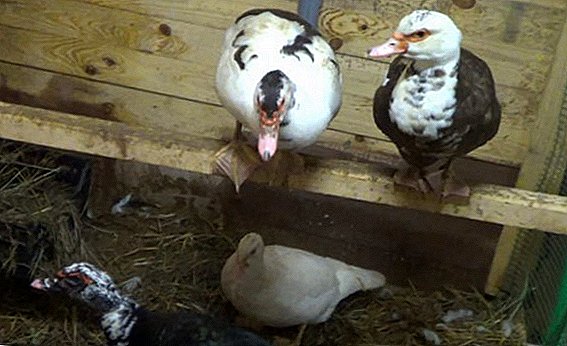 Before you start an Indo-duck or Mandarin duck, you need to think about the room in which they will live. Despite the calm nature of these birds, they cannot be placed together with the rest of the domestic wildlife. However, it is not difficult to build a house-utyatnik and to provide birds with comfortable conditions, it is only necessary to take into account the peculiarities of their content.
Before you start an Indo-duck or Mandarin duck, you need to think about the room in which they will live. Despite the calm nature of these birds, they cannot be placed together with the rest of the domestic wildlife. However, it is not difficult to build a house-utyatnik and to provide birds with comfortable conditions, it is only necessary to take into account the peculiarities of their content.
Dope with their own hands
Externally, the building looks exactly the same as the chicken coop. It should start with the definition of living space. Poultry farms come from a size of 0.3-0.5 square meters. m on 1 indoutines, but such conditions can be called cramped. It is better to proceed from the calculation of 1 square. m 1 bird.
Learn how to build a barn for ducks.
Requirements for a duck house:
- this is the southern side of a house or a plot with good illumination;
- the plot should warm up well;
- optimally if the duckling is covered from gusts of northern winds by other buildings or trees;
- You can not have a building in a valley with a large amount of groundwater.

Requirements for the surrounding area:
- any ducks, including indoots, need access to water, therefore, if there is no natural reservoir, it is desirable to provide an artificial one;
- Indeutki need a place for walking.
- the height of the house should not be below 2 m;
- the length and width are calculated on the basis of the number of deluges and the required area of the room.
Important! Temperature reduction should not be allowed. in the winter below 12 ° C. The behavior of birds can tell how they feel. If the ducks are cold, they bunch up.
Windows cut to the south side. Nests inside set so that they do not fall in direct sunlight.

The level of humidity should not exceed 70% - high humidity contributes to the development of diseases. The ventilation system is artificial, since the fresh air entering the room in winter must be warm.
Natural lighting is windows located on the south side. In winter, indo-rounds extend the daylight hours to 10-12 hours due to additional electric lighting.
Constructing a poultry yard, learn how to build a winter and summer chicken coop, walking for chickens, turkeys, poultry houses.
Materials
Utyatnik can be built from wood or bricks. Whatever version of the basic structure you choose, it will have to be insulated. Construction wood should not have knots, cracks, traces of chaff and other tree borers. It is advisable to first treat the wood with antifungal agents.
Materials for the foundation:
- sand;
- asbestos cement pipes;
- fittings;
- timber;
- ruberoid;
- concrete.

Materials for walls and roofs:
- timber;
- Chipboard or OSB-plates;
- mineral wool;
- wooden slats;
- boards;
- metal corners;
- polyurethane foam;
- paint;
- bitumen mastic.
- logs from a bar;
- insulation (expanded clay);
- OSB-plates.
Did you know? Indo-utka (musk duck) was domesticated by the Aztecs in South America. Hence - one of the options for the appearance of its name: it is an abbreviation of "Indian duck".
Foundation
To create a foundation, you must first decide on its type. It is best to install the building on a columnar foundation. For this:
- Clearing the site under construction.
- Marked on the ground with pegs and mounting cord.
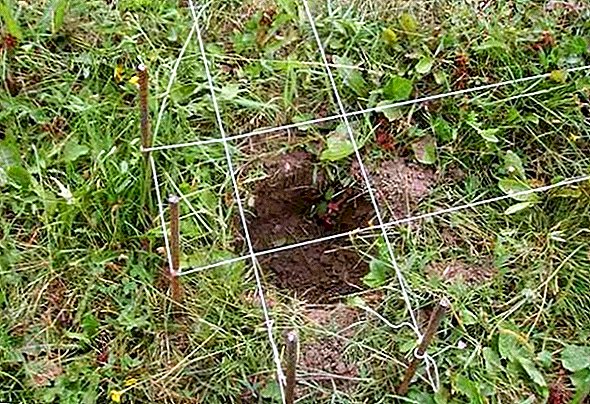
- 20 cm of soil are removed throughout the entire space of the future construction.

- Wells are made under the foundation pipe.
- Sand is poured at the bottom of the hole, a pipe is installed, and a framework of wire reinforcement is placed inside the pipe.
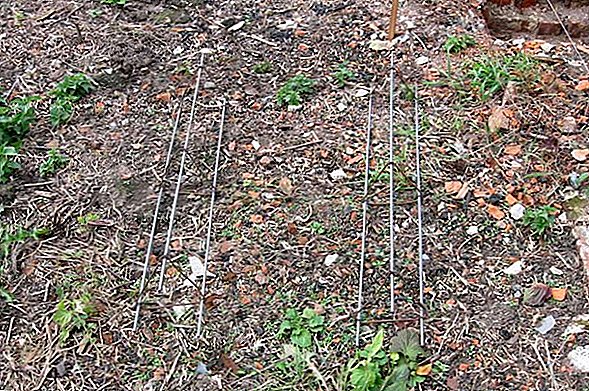
- The inside of the pipe is poured with concrete.
- Sand and gravel are poured inside the hole and tamped down.
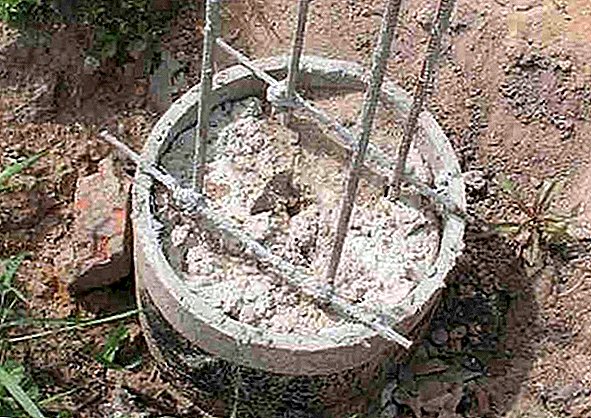
- The space of the pit between the pipes is filled with sand.
Learn how to make a pond for geese and ducks.
After 2 weeks, the concrete will harden. Now on the pillars of the base you need to "put on" a wooden crate from a bar, which will be installed utyatnik. To put the bars on the bars of the reinforcement protruding from the concrete column, they are drilled holes corresponding to the placement of reinforcing bars.

As a waterproofing, 2 layers of roofing material are laid on the concrete pillars under the timber. Between the bars obreshetki fastened with screws. Thus it turns out the frame on stilts.
If you are going to start an indouka, it is important to know how to properly equip a room for growing indoutok.
Walling
Now vertical racks are attached to the frame and fasten them. Then the vertical is fastened by the upper strapping bar. At this stage, future windows and doors are installed on the walls, as well as rafters. At the top of the Utyatnik mount roof frame made of timber.
An alternative to building materials used for walling are OSB-plates - one of the varieties of new materials for interior and exterior wall cladding.

The object-oriented plate is made from high-quality wood chips, pressed under high pressure using synthetic resins. It is moisture resistant, durable material resistant to mold and mildew. Such plates are easy to process, with low moisture permeability and good sound insulation properties. They are not damaged by insects and rodents.
Read tips on keeping an indouka in the winter.
The plates are attached to the frame from the outside with screws. Small gaps between the plates are filled with mounting foam. Bitumen mastic is applied on the outer surface of the wall. Her task - waterproofing walls. While hardening, the mastic forms a very strong elastic film that protects the structure from moisture.
 Bituminous mastic is applied in several layers.
Bituminous mastic is applied in several layers.
From the inside, the walls are insulated with mineral wool, which is attached with wooden slats. As a vapor barrier, you can lay a special film over the mineral wool and fix it. After that, a new layer of OSB-plates is laid. Thus, the wall is a "sandwich" of plates and insulation between them.

From the outside of the wall can be painted. The paint will provide additional protection from moisture and give the duck house a more aesthetic appearance.
Did you know? You can often hear that indoori is the result of a cross between a turkey and a duck, but this is not so. They are not hybrids, but an independent species of the duck family.
Floor and roof
Similarly, the ceiling is made - OSB-plates, mineral wool and bitumen mastic. After that, the roof is covered with slate.

Learn how to mount a gable roof.

Draft floor of the house perform the same plates. Wooden lags are installed over the floor. Between the lags fit insulation. Expanded clay can be used for floor insulation.
Learn how to make a floor in a hen house.
It is poured into the resulting space with a layer of at least 10 cm, leveled and covered with a second finishing layer of plates. Then the floor is covered with a bed of hay and straw.

Wood is considered the most environmentally friendly material for construction. The floor made of wood materials will prevent the indoutok from overcooling and maintain the desired temperature, as the wood retains heat well.
Interior arrangement
Having completed the construction of the house, you need to think about its interior.
- Nests should be installed inside the house. Fundamental requirements for them do not exist. They can be equipped from wooden or plastic boxes. The main thing is that indoouts feel protected in them. The nest must have a small threshold and a roof. Hay or straw is placed inside the nest. Nests can be placed both on the floor and at a height not exceeding 20 cm above the floor level. Their number is calculated on the basis of the ratio: 1 nest for 2 ducks.
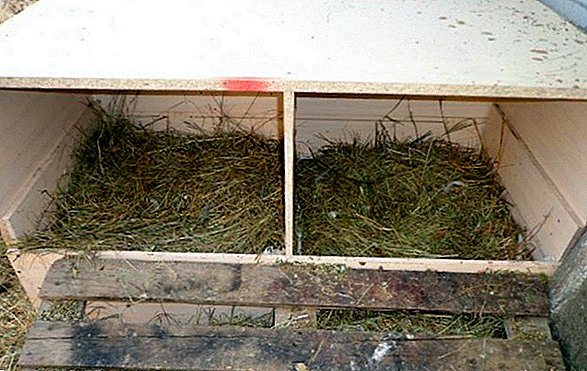
- Drinking bowls are the most problematic element of a duckling. Indeliutations, like other waterfowl, love to pour water around the trough and splash there. Therefore, the best solution would be to have an artificial reservoir in the yard and nipple drinkers in a duckling.

- There are no special requirements for feeders. The feeder can be any container in which the bird cannot climb with its paws.
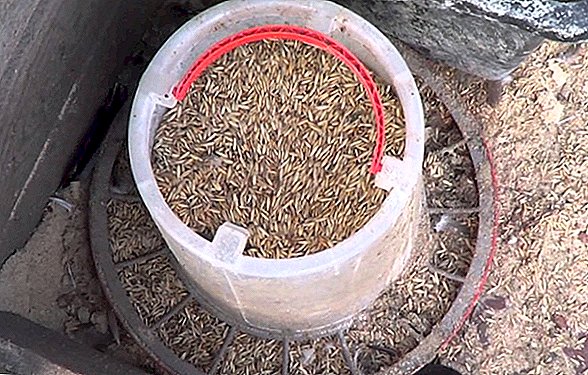
- Natural lighting of the house is created by one window facing the south. The total area of the window or windows must be at least 10% of the total area of the walls. Additional electric lighting should consist of 1-3 lamps at 70 watts.

- Ventilation system duckling - exhaust. If it is constructed of two ordinary pipes in the roof of a room, the pipes on the side of the utyatnik should have special valves that are open during ventilation and closed during the rest of the time.
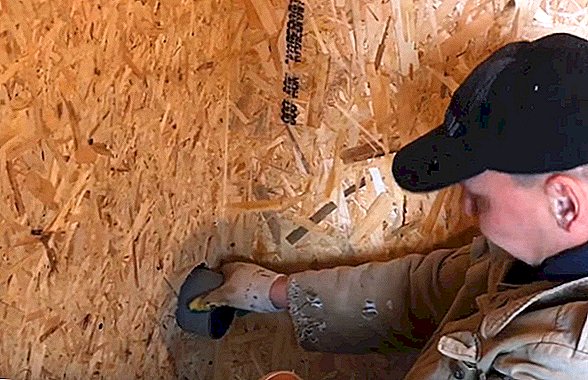
- Additional heating in the winter can be arranged with a heater, which is placed in a place inaccessible to birds.
- In utyatnik also set the box with sand and ash. Ash baths help birds fight parasites.
Building a duckling: video
Important! The rate of artificial lighting for indoutok - 5 watts per 1 square. m
House on the water with their own hands
To make the Indo casts comfortable, an artificial reservoir can be supplemented with a house on the water. To create such a house will need:
- timber for the frame;
- trimming boards;
- wooden pallet;
- 5 l plastic bottles;
- corners;
- brick to create an anchor;
- nylon rope;
- self-tapping screws.
Learn how to make ventilation, heating, lighting, nests, feeders, drinkers, roost in the hen house.
The house is assembled from boards or other materials on the principle of panel construction. It is not recommended to use only plywood sheets, as they will quickly disintegrate under the action of moisture. The size and shape of the house, you can choose any. It is mounted in the middle of the platform - so that there is enough space for a small space around the house.
If the reservoir is deep enough, then the anchor brick on a nylon rope is attached to the wooden pallet. His task is to keep the house in one place of the reservoir.
House for ducks: video
Creating a house for ducks is quite time-consuming, but doable task. The Utyatnik can be assembled from various materials, the main thing is to take into account the needs of the bird in lighting, air temperature, humidity and amenities. Comfortable for birds building guarantees their good resistance to diseases and will support immunity.
Utyatnik: reviews

Floors in the house should be made durable, inaccessible for the penetration of rodents, with a level of 20-25 cm above the ground.

This will require: soda ash, fly ash, creolin. First, the inside walls and ceiling of the house are cleaned with a hot solution of soda ash (1.5-2%). Creolin is used to make a mixture with turpentine and used engine oil and is used to treat nests against parasites.
Feeders and nests are treated with hot ash liquor. To prepare it in 10 liters of water, dilute 2 kg of ash, boil it, and then dilute it with water twice. Wooden equipment is treated in solution, and the metal is first burned with a blowtorch, and then washed in solution.
After processing, the room must be closed for several hours (3-4), and then ventilated and dry well. Before placing the waterfowl the house is heated.














